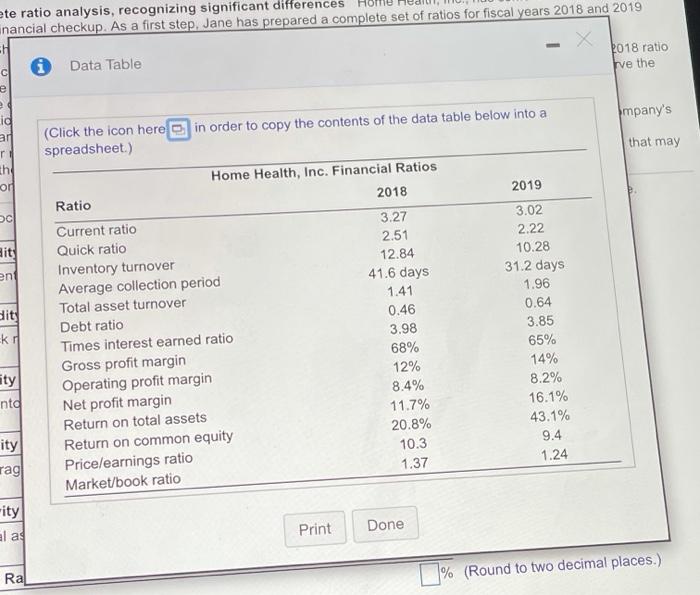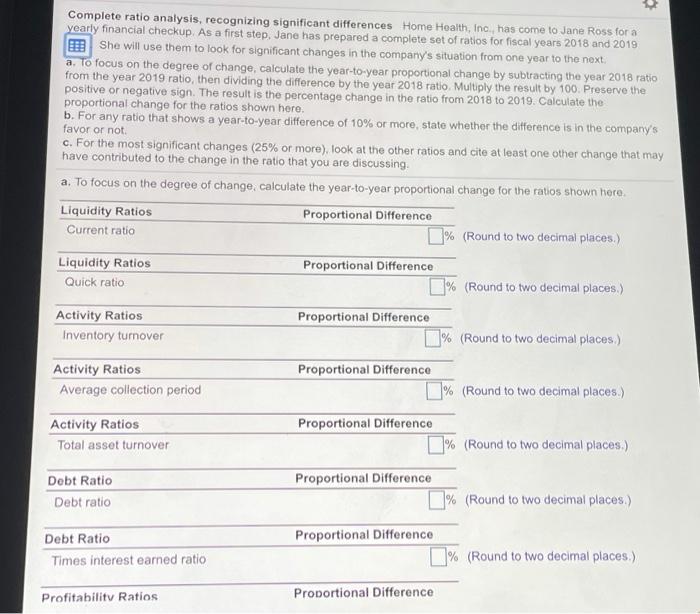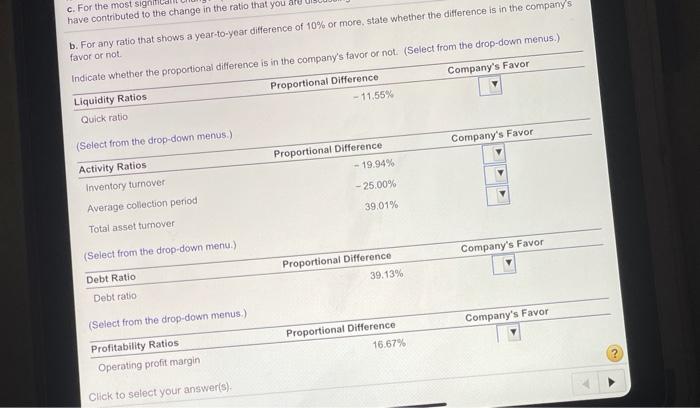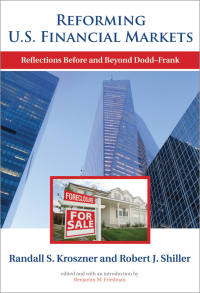HELP ALL PARTS ASAP

ete ratio analysis, recognizing significant differences nancial checkup. As a first step, Jane has prepared a complete set of ratios for fiscal years 2018 and 2019 C Data Table 2018 ratio e ve the e id ar (Click the icon here in order to copy the contents of the data table below into a mpany's ni spreadsheet.) th that may on Home Health, Inc. Financial Ratios Ratio 2018 2019 Current ratio 3.27 3.02 Quick ratio 2.51 2.22 Inventory turnover 12.84 10.28 Average collection period 41.6 days 31.2 days 1.41 1.96 Total asset turnover 0.64 0.46 Debt ratio kr 3.85 3.98 Times interest earned ratio 68% 65% Gross profit margin ity 12% 14% Operating profit margin ntd 8.4% 8.2% Net profit margin 11.7% 16.1% Return on total assets 43.1% 20.8% ity Return on common equity 10.3 9.4 rag Pricelearnings ratio 1.37 1.24 Market/book ratio ent -ity ala Print Done Ra % (Round to two decimal places.) Complete ratio analysis, recognizing significant differences Home Health, Inc., has come to Jane Ross for a yearly financial checkup. As a first step. Jane has prepared a complete set of ratios for fiscal years 2018 and 2019 E She will use them to look for significant changes in the company's situation from one year to the next a to focus on the degree of change, calculate the year-to-year proportional change by subtracting the year 2018 ratio from the year 2019 ratio, then dividing the difference by the year 2018 ratio. Multiply the result by 100. Preserve the positive or negative sign. The result is the percentage change in the ratio from 2018 to 2019. Calculate the proportional change for the ratios shown here. b. For any ratio that shows a year-to-year difference of 10% or more, state whether the difference is in the company's favor or not c. For the most significant changes (25% or more), look at the other ratios and cite at least one other change that may have contributed to the change in the ratio that you are discussing. a. To focus on the degree of change, calculate the year-to-year proportional change for the ratios shown here. Liquidity Ratios Proportional Difference Current ratio % (Round to two decimal places.) Liquidity Ratios Quick ratio Proportional Difference [% (Round to two decimal places.) Proportional Difference 1% (Round to two decimal places) Activity Ratios Inventory turnover Activity Ratios Average collection period Activity Ratios Total asset turnover Proportional Difference 1% (Round to two decimal places.) Proportional Difference % (Round to two decimal places) Proportional Difference 1% (Round to two decimal places.) Proportional Difference 1% (Round to two decimal places.) Debt Ratio Debt ratio Debt Ratio Times interest earned ratio Profitability Ratios Proportional Difference have contributed to the Profitability Ratios Gross profit margin Profitability Ratios Operating profit margin Proportional Difference % (Round to two decimal places.) Proportional Difference 1% (Round to two decimal places.) Proportional Difference 1% (Round to two decimal places.) Proportional Difference % (Round to two decimal places.) Profitability Ratios Net profit margin Profitability Ratios Return on total assets Profitability Ratios Return on common equity Proportional Difference % (Round to two decimal places.) Market Ratios Priceleamings ratio Proportional Difference 1% (Round to two decimal places.) Market Ratios Market/book ratio Proportional Difference % (Round to two decimal places.) state whether the difference is in the co c. For the most signin have contributed to the change in the ratio that you are b. For any ratio that shows a year-to-year difference of 10% or more, state whether the difference is in the company's favor or not Indicate whether the proportional difference is in the company's favor or not (Select from the drop-down menus.) Liquidity Ratios Proportional Difference Company's Favor Quick ratio - 11.55 (Select from the drop-down menus.) Company's Favor Proportional Difference - 19.94% - 25.00% Activity Ratios Inventory turnover Average collection period Total asset turnover 39.01% (Select from the drop-down menu.) Company's Favor Proportional Difference 39.13% Debt Ratio Debt ratio (Select from the drop-down menus) Company's Favor Profitability Ratios Operating profit margin Proportional Difference 16.67% Click to select your answer(s). have contributed to the change in the ratio that you Company's Favor Proportional Difference 16.67% Profitability Ratios Operating profit margin Return on total assets Return on common equity 37.61% 107.21% Select from the drop-down menus) Company's Favor Market Ratios Markelbook ratio Proportional Difference -9.49% c. For the most significant changes (25% or more), look of the other ration and cite last one other change that may have contributed to the change in the ratio that you are discussing The average collection period decreased by - 26.00%. This could be because (Solct tho bost answer below.) A. there has been quicker collection OB. there has been a change in credit torms OC. the accounts receivable decreased due to lower sales OD all of the above The total asset turnover has increased by 39.01%. This could be because: (Select the best answer below.) A sales have increased A colantvour answers) The debt ratio has increased by 39.13%. This could be because: (Select the best answer below.) A. there is a decrease in assets. B. there is an increase in debt. c. neither of the above. D. both A and B. The return on total assets has increased by 37.61%. This could be because: (Select the best answer below) A. the earnings available for common stockholders has increased B. current assets have decreased. c. total assets have decreased OD all of the above The return on common equity has increased by 107 21%. This could be because: (Select the best answer below.) A. common stock equity has decreased B. the earnings available for common stockholders has increased. C. retained earnings have decreased D. all of the above













